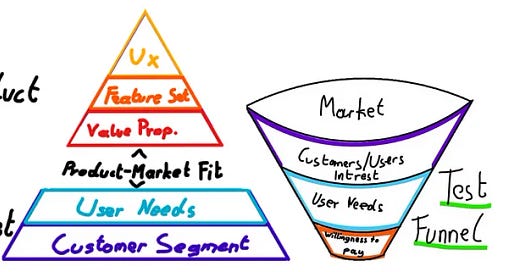Finest-5 Product reads #52
Growth Inflection, turnaround in PMing, hooked strategy, and other reads..
Hi, Happy Sunday ,
With PLG taking the centre ground quickly, Appcues has launched a new report for benchmarks, derived from the survey they took 7 major growth metrics. Interesting to have a look.
Every week, I summarise the best reads from 100+ articles with the sole purpose of helping you become better at product with minimal effort. Subscribe!!
Growth inflections
Everyone talks about how growth looks like, how to see if demand is greater than supply. Lenny goes a little back step to understand what precedes an inflection in growth.
Key Takeaways:
One additional feature can indeed lead to a massive inflection in growth (though it usually won’t)
While you’re working on improving the product, it’s worth attempting to engineer an “event” that gets your product in front of many people, even before you think your product is ready
Long-term, the most lasting growth inflections happen when you lean into the primary growth engine
How we made the turnaround in Product Management
Everything we do and claim and everything we decide is primarily hypotheses that we either have to falsify or verify.
Key Takeaways:
When testing your assumptions, ask Users, not about the solution, ask them about their problems and needs.
When we test our hypotheses, we must aim for a goal. This goal should be defined in a product strategy in which we differentiate ourselves from our competitors.
We differentiate between qualitative and quantitative tests on the one hand, and between marketing tests (or MVP tests) and product tests (or MVP prototype tests) on the other.
Minecraft, Dropbox, and Amazon Prime Use the Same Strategy to Keep You Hooked
To hold on to customers, businesses and to keep the competition away from their customers, most businesses build moats by erecting barriers to entry against competitors
Key Takeaways:
Exit cost is the real or perceived or emotional cost faced by a user while leaving a product or switching over to another product.
In games where users invest their time, energy, and creativity (and money) and use the game as a form of self-expression
Getting the user to commit to a recurring payment is a massive barrier. But once the user subscribes to a recurring fee, cancelling a subscription is rare.
Defensibility & Competition
Most SaaS software starts off default non-defensible and tends to build a moat over time.
Key Takeaways:
Many SaaS or enterprise companies eventually develop sales driven moats. Moats may include: Multi year contracts, Sales process.
As a proto-founder, it is worth thinking through how aggressive the incumbents are for your potential product area, how clear they are on the opportunity you are going after, and how likely they are to act.
There are roughly three forms of focus for a company. Navel-Gazing-Centric vs Competition-Centric vs User-Centric
What Could You Do to Untrap Your Team?
The reality for product teams is complicated. And most teams are trapped in different mindsets.
Key Takeaways:
You need to learn how to walk people out of output thinking and move them toward outcome orientation.
Great product teams continuously create opportunities to uncover unknowns instead of falling victim to their opinions.
When your focus is on goals, results can surprise you positively. But when your attention goes to meeting deadlines, mediocrity is the result.
Product of the week: Paywallscreens
Inspiration from 7,000+ startup paywall screens on both what to paywall and how to “message” it
Interesting on the web:
Microsoft limits Bing chat to five replies to stop the AI from getting real weird
Salesforce yields to activist pressure with harsh new policies for engineers, salespeople




